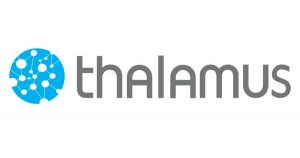
Note for nerds before we begin: The Five Deaths are the name of the 5 islands where Jurassic Park takes place.
In these 6 years that we’ve been building and implementing Thalamus in both multinational and local companies, added to the more than 15 years of experience heading tech projects within corporations, time and again we’ve come up against some catastrophic implementations of CRM software in Marketing.
In general, we’ve been met with software solutions provided by what we call The Five Deaths; the giant corporate software companies that provide CRM products. If you’re unsure which ones we’re talking about, their products are usually named some combination of the following words, in any order: cloud marketing sales crm omnichannel campaign manager social force.
The solutions provided by The Five Deaths are all cut from the same mold: they were created as CRM and turned into Consumer Engagement platforms; they have a hammer, and see nails everywhere.
Why isn’t Consumer Engagement the same thing as CRM? We can summarize why in 4 points:
- Who forms part of the relationship? CRM is focused on clients; Consumer Engagement focuses on consumers.
- How many people form part of the relationship? CRM helps hundreds of vendors connect with thousands of clients. Consumer Engagement helps all of a company’s brands connect with millions of consumers.
- What division of the company needs it? CRM aids Sales and Trade Marketing divisions improve processes for their sales representatives. Consumer Engagement helps Brand Marketing execute and analyze their brand strategies.
- Technical requirements. Consumer Engagement must be able to execute an entire marketing strategy in real time, with millions of consumers interacting concurrently through multiple touchpoints. CRM only needs to manage the interactions generated by those hundreds of vendors and thousands of clients with low concurrency.
We want to share with you a few highly representative anecdotes of what we see every day in the market. Any similarity to your own company is NOT just coincidence, and changing the ending to this horror story lies in your hands.
Anecdote 1. A business model to fit the vendor and not the client.
A global company chooses one of The Five Deaths (Death 1) to stand in for the role of a Consumer Engagement platform for Marketing.
The commercial blueprint for buying and using software provided by Death 1 is pretty much standard for The 5 Deaths:
After being sized up by Death 1, the client company should make an initial payment ranging anywhere from one to various millions of dollars, in the form of a one-off.
Furthermore, they have to pay an annual maintenance fee proportional to the one-off, usually with a minimum contract for a number of years.
With this abusive commercial set up, the only sure thing is that regardless of how the project comes off, Death 1 will always win, and all the risk falls on the client’s end.
Three years later, the project is a dud. They failed to achieve the functionality the client needed. In an attempt to live up to the agreement, Death 1 implements an array of more than five systems and ad hoc interfaces that resemble a plate of spaghetti. The actual project never consisted of configuring a tested system, but rather of brainstorming how to integrate a sometimes incompatible set of solutions.
The time it takes to stabilize this monstrosity will depend on the skills of a consultant who, at the client’s cost, manages to somehow develop a way for all Death 1’s systems to communicate with each other. The greatest skill that the consultant will demonstrate is continuously convincing the client to give up previously promised functionalities and scope in order to put an end to the misery.
Thalamus’ business model is in favor of the client: there are no setup costs, nor minimum term contracts. There’s simply a monthly fee that the client pays while they decide to use Thalamus.
Anecdote 2. Trying to shove a square peg into a round hole.
A multinational company is informed by their marketing department of the need for software to manage and connect with their brand’s consumers. The IT department decides to contract one of The 5 Deaths, in this case we’ll call them Death 2.
Despite being sold as an agile SaaS and pioneering cloud based software, the most outstanding characteristic of this real velociraptor will be the speed at which it eats up your budget.
As we previously mentioned, CRM isn’t the right tool for doing Consumer Engagement in the same way that a tractor isn’t an adequate vehicle for city driving while a car is: both may have tires, a steering wheel, a radio and brakes, but they aren’t the same and don’t serve the same purpose.
Since the software provided by Death 2 was never contemplated for the needs of Consumer Engagement, the client must contract from Death 2, or an “official partner” of Death 2, a team of consultants whose hourly rate is worthy of Cristiano Ronaldo. This team of consultants will try for months at end to turn a tractor into a car, running up enormous hidden costs for the client in order to meet their needs with Death 2’s software. And with a qualification: this is the team of consultants and not the brilliant minds who sold the project.
A manager at this current client once told us: “Death 2 has the most brilliant people. But you only see them when they give their 30 min talk in the annual mega event for top clients in London or New York. Then, the rest of the year I had to make do with a consultant who didn’t understand their own software and far less about my business”.
Upon finalizing development and implementation, the result is to be expected: the marketing departments begin to complain about the lack of functionality, that the system doesn’t work as promised, that it’s rigid and the time-to-market is so long that the functionalities they need are never available when they need them.
Thalamus was conceived as a Consumer Engagement platform with a 360 degree view of Marketing’s needs in order to execute their brand plan. All our clients pay the same fee, which was accepted at the start of the relationship, with no hidden fees.
Additionally, instead of working with a marketing department like an IT company does (requiring the creation and uploading of tickets to be responded to by a lousy service team on the other side of the world), we work as marketing partners: with an account executive assigned to the client who’s available via all means of communication.
Anecdote 3: Trolls in the IT department
A worldwide IT company decides that Death 3 is the only system for all existing processes and for those that don’t exist as well (Finance, Sales, Production, Marketing, running a school of wizardry, etc.) Due to their size, sluggishness, and notable clumsiness, the thing that most resembles Death 3 is the famous Cuenca dinosaur: “It was colossal and robust, measuring 15 meters in length. But its enormous size masked a brain only 8 centimeters across.”
Marketing wants to do Consumer Engagement, and while technology isn’t exactly their specialty, they intuit that for all that their ERP may be great, it will hardly possess the agility and intelligence needed to execute their marketing plan in real time with millions of consumers.
Doing a quick benchmark with Marketing colleagues, their suspicions are confirmed, so they get in touch with providers with proven expertise in real time marketing, such as Thalamus.
After meetings where they verify that scope, reach, price and service is precisely what they need, they seek out the validation of the experts: the IT Trolls.
Disregarding the presentations, documentation, certifications, success cases or demos, the IT Trolls always arrive at the same conclusion: at their company, it’s Death 3 or nothing.
How does this conflict get resolved? A frustrated Marketing calls up their Marketing agency and they contract it directly to develop them a small monstrosity in PHP.
How to avoid stonewalling by the Trolls: Postpone informing them or involving them until it’s too late for the Trolls to block the project. Doing things that way, the company ends up with an ad hoc solution, poorly designed, unsafe, fragil and beyond IT’s knowledge.
Without meaning to generate panic, we can add that 99.9% of the time, Marketing agencies don’t develop software, which makes sense since it’s not the core of their business. There we find that the strategic development of the relationship platform technology rests in the hands of an unknown third party who is never audited by IT, being headed up by the marketing agency who has a ton of creativity in their very DNA, but no tech knowledge. What could possibly go wrong?
Not offering Marketing the right solution leads to accepting even worse solutions from the point of view of tech and security. Thalamus provides a secure solution, with all the security certifications and personal data protection that global businesses require.
CONCLUSIONS
When a multinational company chooses one of The 5 Deaths, are they reducing risk, or are they really increasing it exponentially?
IT departments choose The 5 Deaths because they view it as “less personal risk”, at the cost of handing off the problem to the company that pays them to make professional and intelligent decisions. Like the dinosaurs, those business models are destined for extinction. It’s up to the client whether or not to join them on that one last adventure.
Wouldn’t it be less risky to choose software with a business model tailored to the client? With no entrance or exit clauses? Without the one-off? With proven implementations? Without hidden costs? That isn’t some huge, rigid and expensive dinosaur?
Thalamus is the best solution for international and local companies, which maximizes opportunities for success with their Consumer Engagement strategy.
For more information on Thalamus, you can contact me directly at gaston@thalamuscorp.com, or you can watch videos and get information at www.thalamuscorp.com.
Gaston Blanco
Founding Partner y Account Director
Thalamus

